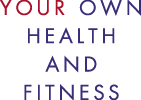Glycol ethers are classified by the EPA as low-level toxins. They are used as solvents for most conventional cleaning products. 15 minutes cleaning your shower exposes you to three times the recommended maximum one-hour dose. If you’re a professional house cleaner, you take in twice the recommended maximum dose of formaldehyde.
These and other fun (and frightening) facts are contained in a report commissioned by the California Air Resources Board titled Indoor Air Chemistry: Cleaning Agents, Ozone and Toxic Air Contaminants. Released last week, the report examines exposures to toxic air contaminants from common household products. The toxins are either in the product already or they are created when they react with other common chemicals. For example, ozone from air purifiers is toxic just by itself. But the artificial scent from an air freshener reacts with the ozone to create formaldehyde.
The spokesman for the Soap and Detergent Association said what you’d expect: people just need to use good sense when using cleaning products, but for God’s sake don’t stop buying them! I made up that last part. The lead author of the report said something similar. No one suggested that non-toxic household products not only exist, but you can buy them easily. You can even make your own alternative cleaners.
The report sent me down an interesting path. Since toxins affect each of us differently—remember, the dose makes the poison—I not only thought about how to reduce exposures but also about how my body and yours deals with a toxic assault. Our bodies have not one but two detoxification processes. So I went to the Internet and googled “detoxification.” What I got was websites that will happily sell me products for chelation and enemas using various substances and much, much more. But nothing about the two kinds of biochemical processes that get rid of toxic stuff.
Where I found that information was under the heading “drug metabolism.” That’s right: our knowledge of how the body detoxes comes from pharmacologists trying to figure out what happens to pharmaceuticals once they’re in your body. Like any other toxin, your body wants to turn drugs into something harmless and get rid of them.
Your reaction to a toxin is a poisoning reaction. So what does that make the side effects of a drug? For that matter, what does that make the intended effect of a drug?
Drugs are celebrated and handsomely rewarded as the backbone of health care. Meanwhile environmental toxins are underresearched, underreported, and our protection is to use good sense and caveat emptor—buyer beware. Does this make good sense to you?
The issues in this article are developed (with references) in issue #10 of the Progressive Health Observer in the article titled “Health Inequity and Toxic Load.”
Related resources are available on the Environmental Health page.

